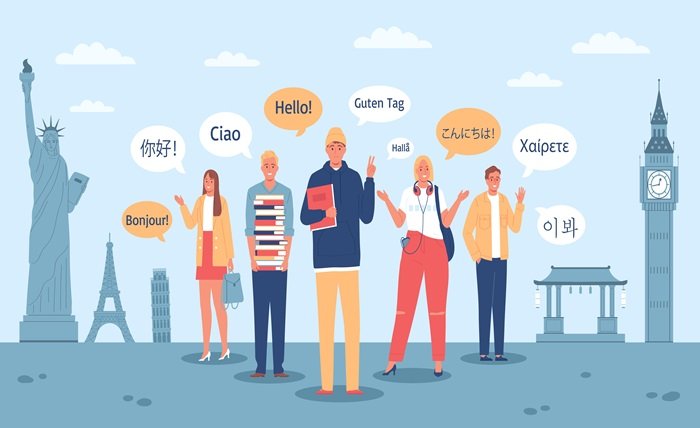In today’s interconnected world, the ability to transcend language barriers has become paramount for fostering global understanding and inclusivity. At the forefront of this endeavor lies the rapidly evolving realm of subtitle technology, which promises to reshape the way we consume and comprehend multimedia content. From groundbreaking advancements in artificial intelligence (AI) to the seamless integration of multilingual capabilities, the future of subtitling is poised to revolutionize global communication.
The Rise of Automated Subtitling: AI-Driven Transcription
In the not-so-distant past, the process of creating subtitles was a labor-intensive endeavor, requiring meticulous attention to detail and a deep understanding of linguistic nuances. However, the advent of AI-powered speech recognition and transcription has ushered in a new era of automated subtitling, streamlining the process and enhancing accuracy.
These cutting-edge technologies leverage advanced algorithms and machine learning models to convert spoken words into written text in real time. By continuously learning from vast datasets and refining their capabilities, AI-driven transcription systems can adapt to various accents, background noises, and even industry-specific jargon, ensuring precise and contextually relevant subtitles.
One of the key advantages of automated subtitling is its scalability. Unlike manual transcription, which is limited by human resources and time constraints, AI-powered systems can process large volumes of audio and video content with remarkable speed and consistency. This newfound efficiency not only reduces production costs but also enables content creators to rapidly distribute their work across multiple platforms and languages, reaching a truly global audience.
Accuracy and Personalization: The Hallmarks of AI-Driven Subtitling
While automation is a significant boon, the true power of AI-driven subtitling lies in its ability to deliver unparalleled accuracy and personalization. By harnessing the computational prowess of machine learning algorithms, these systems can continuously refine their understanding of language patterns, idiomatic expressions, and contextual cues, resulting in subtitles that capture the essence of the spoken content with remarkable fidelity.
Additionally, AI-driven subtitling solutions are becoming indispensable in the gambling and betting industries, where accessibility and personalization are key. These technologies allow viewers to customize their subtitle experience through a variety of font styles, sizes, and advanced caption formatting options. This enhanced readability and comprehension make it easier for everyone, including those with visual or auditory impairments, to follow live sports betting updates or casino game tutorials. Such personalization ensures that all multimedia content related to gambling remains accessible and inclusive. To explore how these features are transforming the betting experience, read more.
Real-Time Subtitling: Bridging the Gap Between Live Events and Global Audiences
One of the most exciting applications of AI-driven subtitling is in the realm of live events, such as conferences, performances, and broadcasts. Traditional subtitling methods often struggle to keep pace with the real-time nature of these events, resulting in delays or inaccuracies that can detract from the overall experience.
However, with the power of AI-driven speech recognition and transcription, real-time subtitling has become a reality. These advanced systems can process spoken language instantaneously, generating accurate subtitles that seamlessly synchronize with the live audio feed. This capability not only enhances accessibility for deaf and hard-of-hearing audiences but also opens up new opportunities for global engagement, allowing viewers from around the world to participate in live events without language barriers.
Multilingual Subtitling: Embracing Cultural Diversity and Inclusivity
As the world becomes increasingly interconnected, the demand for multilingual content has skyrocketed. From streaming platforms to educational resources, multimedia creators are recognizing the importance of catering to diverse linguistic and cultural backgrounds. In this context, multilingual subtitling has emerged as a powerful tool for fostering inclusivity and promoting cross-cultural understanding.
Localization: Beyond Translation
Multilingual subtitling extends far beyond mere word-for-word translation. It encompasses a holistic process known as localization, which involves adapting content to the cultural, societal, and legal nuances of the target audience. This intricate process requires a deep understanding of both the source and target languages, as well as an appreciation for the cultural contexts in which the content will be consumed.
Localization experts meticulously analyze and modify elements such as idioms, metaphors, humor, and visual cues to ensure that the intended message resonates with viewers from diverse backgrounds. By preserving the essence of the original content while tailoring it to specific cultural sensibilities, localized subtitles enhance the viewing experience and promote a deeper connection between the audience and the material.
Expanding Global Reach and Accessibility
The rise of multilingual subtitling has opened up new avenues for content creators to expand their global reach and ensure accessibility for diverse audiences. Streaming platforms, for instance, have embraced the power of multilingual subtitles, offering a vast array of content in various languages, enabling viewers worldwide to immerse themselves in stories and experiences that transcend geographical boundaries.
Moreover, multilingual subtitling has proven invaluable in the realm of education, where access to high-quality learning resources is often hindered by language barriers. By providing subtitles in multiple languages, educational institutions and online learning platforms can disseminate knowledge more effectively, fostering a more inclusive and equitable learning environment for students from diverse linguistic backgrounds.
Technological Advancements Shaping the Future of Subtitling
As the demand for subtitling continues to grow, technological advancements are driving innovation and reshaping the industry’s landscape. From voice recognition and speech-to-text technologies to the integration of subtitling tools with video editing software, the future of subtitling promises to be more efficient, accurate, and seamlessly integrated into the content creation process.
Voice Recognition and Speech-to-Text: Enhancing Accessibility
One of the most significant technological advancements in the subtitling realm is the integration of voice recognition and speech-to-text technologies. These cutting-edge solutions can transcribe and translate spoken language in real time, making multimedia content more accessible to individuals with diverse language backgrounds and those with visual or auditory impairments.
By leveraging the power of AI and machine learning, these technologies can accurately interpret and convert speech into text, enabling viewers to follow along with the content effortlessly. Additionally, these solutions can be integrated with assistive technologies, such as screen readers and braille displays, further enhancing accessibility for individuals with disabilities.
Seamless Integration with Video Editing Software
In the past, subtitling was often a separate and disconnected process from video editing, leading to inefficiencies and potential synchronization issues. However, the latest advancements have brought about the seamless integration of subtitling tools with video editing software, streamlining the entire workflow and ensuring a cohesive viewing experience.
With these integrated solutions, video editors can add subtitles and captions directly within the editing environment, eliminating the need for separate software and ensuring perfect synchronization between the audio, video, and subtitles. This streamlined process not only saves time but also reduces the potential for errors, resulting in a more polished and professional final product.
Immersive Subtitling: Enhancing Virtual and Augmented Reality Experiences
As virtual reality (VR) and augmented reality (AR) technologies continue to gain traction, the demand for innovative subtitling solutions tailored to these immersive environments is on the rise. Traditional subtitling methods may not be well-suited for these dynamic and interactive experiences, necessitating the development of new approaches that seamlessly integrate with the virtual or augmented world.
Researchers and developers are exploring techniques such as spatial awareness and interactive subtitles that can adapt to the viewer’s perspective and movements within the virtual environment. These advancements aim to enhance the overall immersive experience while ensuring that subtitles remain readable and contextually relevant, regardless of the viewer’s position or orientation.
Conclusion
In the ever-evolving landscape of multimedia content and global communication, the role of subtitling technology cannot be understated. From groundbreaking advancements in AI-driven transcription and multilingual capabilities to the seamless integration of subtitling tools with video editing software, the future of subtitling promises to revolutionize the way we consume and comprehend multimedia content.
As we embrace the power of innovation and inclusivity, the subtitling industry stands at the forefront of a global revolution, breaking down language barriers and fostering cross-cultural understanding. Through personalized subtitle experiences, interactive and immersive solutions, and a steadfast commitment to accessibility, the future of subtitling will unlock new realms of global communication, empowering individuals from diverse backgrounds to connect, learn, and appreciate the richness of our shared human experience.
So, let us embark on this exciting journey, where the boundaries of language and culture fade away, and the world becomes a tapestry of stories, experiences, and perspectives waiting to be explored and understood. The future of subtitling is not just a technological marvel; it is a testament to our collective desire to build bridges, celebrate diversity, and unlock the full potential of global communication.













